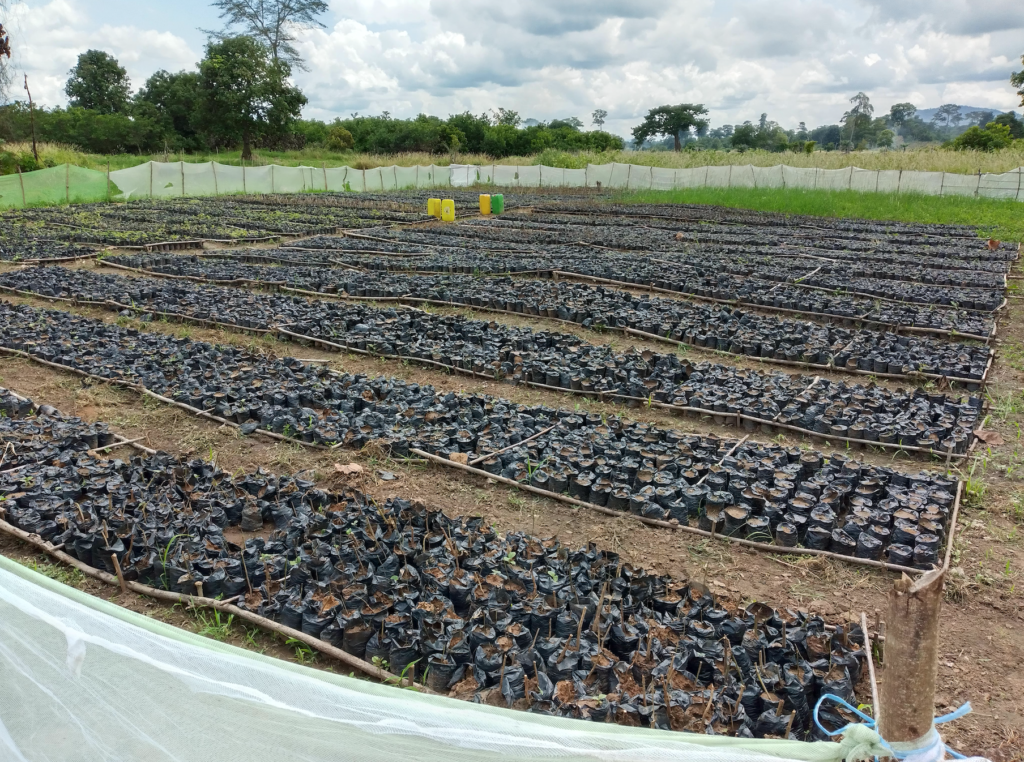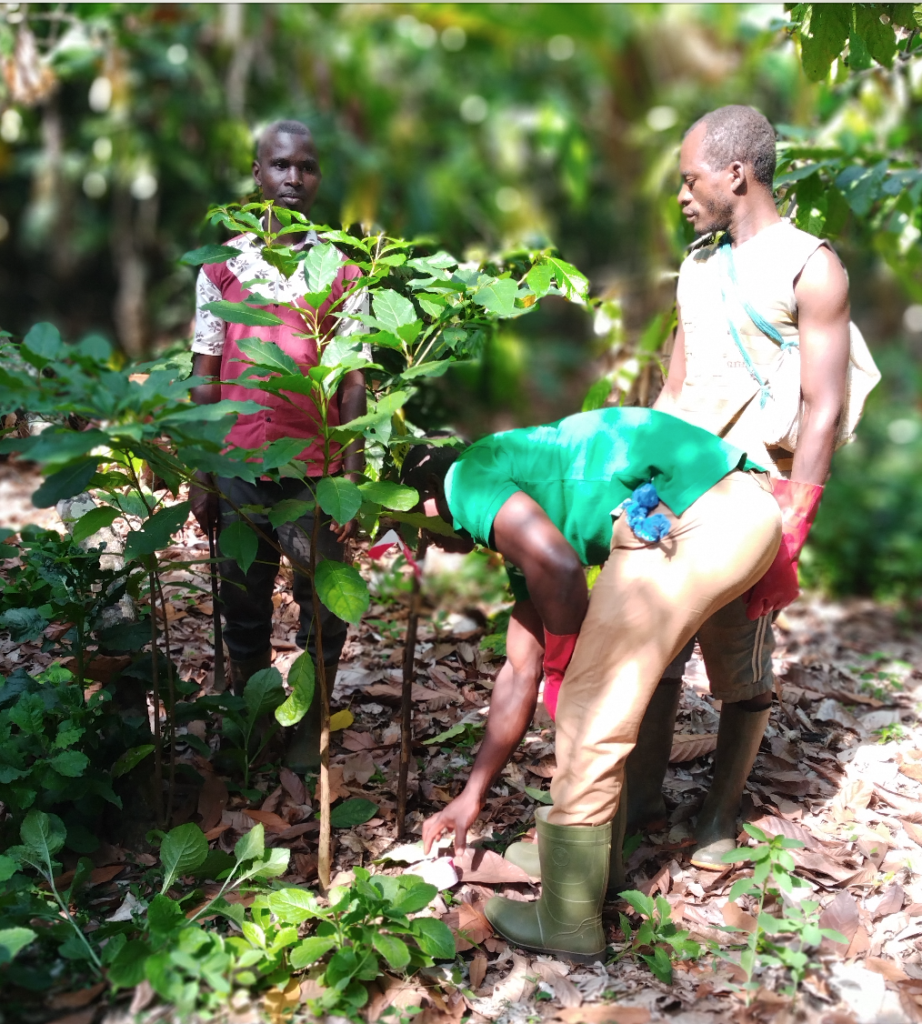SOS-FORÊTS fight against deforestation in Côte d’Ivoire

For over two decades, the farmers of Ouably-Gondrou village, in Kouibly locality located in western Côte d'Ivoire have experienced significant declines in cocoa yields due to cutting down of trees in the cocoa plantations which exposes the plants to harmful sun rays. BirdLife Partner SOS-Forêts has been carrying out restoration initiatives in the country. When SOS-Forêts carried out an awareness campaign in the region in 2021, Clément Sie a 37-year old farmer and his peers understood the impact of deforestation on cocoa production. In 2022, SOS-Forêts began implementing a restoration project funded by TerraFund for AFR100, aimed at restoring 150 ha of tree cover in Kouibly. Solange Kablan from SOS-Forêts sat down with Sie who explains how he is involved in the project.
By Vanissa Diring
Solange: Thank you Sie for agreeing to talk to us. Now tell me, when did you understand the importance of agroforestry in cocoa farming?
Sie: The local community here depends on cocoa production. For some time now we have seen the cocoa production in our farms reduce significantly. In 2021, SOS-Forêts came to our village for an event as part of an awareness campaign on the importance of planting trees. During this event, the SOS-Forêts team highlighted the fact that most of the trees in the cocoa plantations had been cut down, hence there was less shade to protect the cocoa plants from the strong sun rays, which in turn affected production.
Solange: How did you get involved in the project?
Sie: In 2022, when SOS-Forêt, began carrying out a reforestation project in various villages in Kouibly including Ouably-Gondrou, I was among the first people to volunteer to join the Local Conservation Committee (LCCs), constituted by SOS-Forêt. In our village, the LCC is made up of 10 members including 8 men and 2 women.
Solange: What is the role of the LCCs in this project?
Sie: The LCCs are instrumental in geolocation, whereby the trees are planted in specific portions of the land, and their growth tracked and monitored. We do this with the expertise of water and forestry agents. Members of the LCCs were the first people who have geolocated our portions of land. I have geolocated 3.62 hectares of land. Other village members understood the importance of this geolocation and followed suit. As of February 2023, we had more than 12 hectares of geolocated land, including individual and community plots, which will enable reforestation.

Solange: When do you start planting the trees and which species will be planted?
Sie: We are already planting while waiting for the arrival of the first rains expected in March. We are aiming to plant about seven species of trees provided to us by SOS-Forêts including Mahogany, Betewood, Akpi, and Petit Cola among others.
Solange: What is your parting shot?
Sie: The reforestation project being implemented by SOS-Forêts is timely and will be instrumental in helping us improve our cocoa yield. We are now beginning to understand that trees are beneficial if they grow side by side with our cocoa plants, as they not only provide shade, but also provide other numerous benefits like preventing soil erosion, preserving important biodiversity and increased income, and we are optimistic about the future.
About AFR100
The TerraFund for AFR100 (the African Forest Landscape Restoration Initiative) is a country-led effort to bring 100 million hectares of land in Africa into restoration by 2030. AFR100 contributes to the Bonn Challenge, the African Resilient Landscapes Initiative (ARLI), the African Union (AU) Agenda 2063, the Sustainable Development Goals and other targets.
